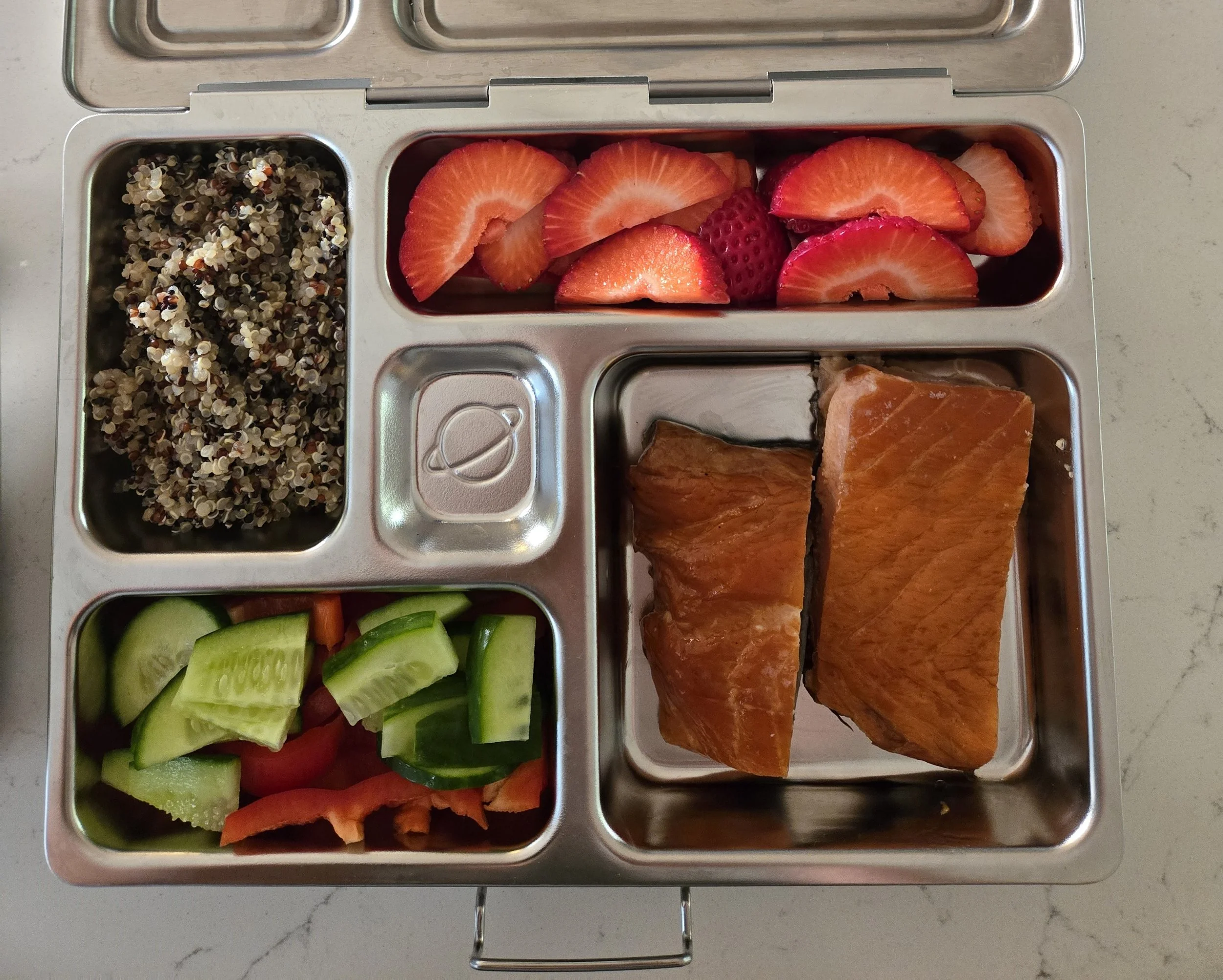Healthy Lunchbox Blueprint
Packing a lunchbox can feel like a daily puzzle. You want to give your kids food that fuels their bodies and supports their focus, energy, and growth, but it also has to be something they’ll actually eat (and not trade for crackers or M&Ms like my 4-year-old does on occasion).
I try not to overcomplicate it and stick to three core categories: colorful fruits and veggies, protein & healthy fats, and complex carbohydrates. When I pack my sons’ lunches, I usually choose two items from the first category and one from each of the other categories. This simple formula helps me create well-rounded meals that keep them full, focused, and satisfied — and it makes lunch-packing less stressful for me. I usually pack lunches in the evenings instead of the morning, but you can choose whatever works best for you and your routine!
Here’s my go-to blueprint to help you feel confident about what you’re putting in your child’s lunchbox. You’ll walk away with ideas you can mix and match, tips to boost nutrition in a way that’s kid-approved, and a gentle reminder that it’s not about perfection.
1. Colorful Fruits and Vegetables
“Eating the rainbow” ensures your child gets a broad spectrum of vitamins, minerals, and antioxidants that support their immune system and overall well-being. Try to include at least one fruit and one vegetable each day.
Examples by color:
Green: cucumber, celery, broccoli, asparagus, peas, kiwi, Brussels sprouts, zucchini, green apple slices
Red: bell pepper, cherry tomatoes, strawberries, raspberries, watermelon
Yellow: yellow bell pepper, sweetcorn, pineapple, bananas, mango
Orange: carrots, oranges, peaches, apricots, papaya
Purple/Blue: red cabbage, blueberries, blackberries, plums, beetroot
2. Protein and Healthy Fats
Protein and fats are essential for steady energy, stable moods, and growth. Protein provides the building blocks for growing bodies, while healthy fats support brain and nervous system development.
Examples:
Leftover proteins from dinner (shredded meats, tofu, meatballs, fish)
Smoked salmon
Canned salmon or skipjack tuna (lowest in mercury) mixed with a little sour cream or avocado
Turkey roll-ups
Turkey or chicken sausages (look for nitrate-free)
Rotisserie chicken pieces
Boiled eggs, egg muffins, or frittata slices
Cheese/string cheese
Cottage cheese
Greek yogurt
Hummus or roasted chickpeas
Falafel balls
Baked/roasted tempeh strips
Cooked beans or lentils
Edamame
Sliced avocado
3. Complex Carbohydrates
Complex carbs provide fiber for a healthy gut and sustained energy for learning and play.
Examples:
Quinoa, brown rice, barley
Whole-grain bread, wraps, or tortillas
Whole-grain, chickpea, or lentil pasta
Roasted potatoes, sweet potatoes, or squash
Overnight oats in a jar
Many of these foods fall into more than one category, and you can mix and match to keep things interesting. And of course, always adjust based on your child’s dietary needs, allergies, and your family’s preferences.
Tips for making Lunch More Appealing
Invite them to help: Let your child help pack their lunchbox by choosing items from each category. Bring them along to the grocery store or farmers' market and let them pick a few foods.
Offer mini versions: Baby vegetables, like cherry tomatoes, baby cucumbers, and baby carrots, are often sweeter and more appealing to kids. Or try boiled quail eggs as an alternative to chicken eggs.
Include safe favorites: Always pack at least one or two foods you know they love, so you can be confident they’ll eat something, while still encouraging them to try new options.
With a little planning and creativity, you can turn lunch packing into a fun routine that nourishes your child and supports their healthy development!
Looking for more strategies to build nourishing dinners for the whole family? Get my Meal Plan & Prep Guide for Busy Families!
